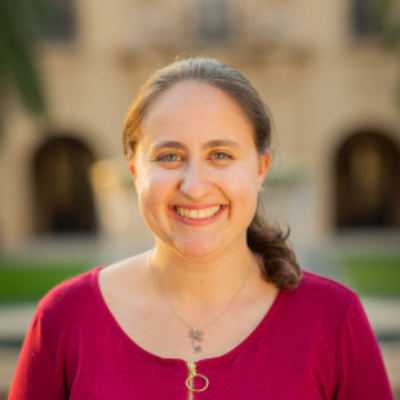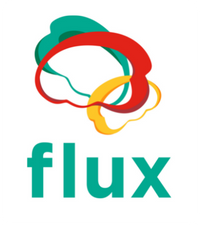Dr. Salo is a Society for Research in Child Development (SRCD)/American Association for the Advancement of Science (AAAS) Federal Executive Branch Policy Fellow in the Child Development and Behavior Branch at the Eunice Kennedy Shriver National Institute of Child Health and Human Development, National Institutes of Health (NIH). She primarily supports the Language Development and Multilingualism portfolio, which includes work using neuroscience methods to understand communicative and linguistic development, but as she notes, “our entire Branch supports a range of work in the realm of developmental cognitive neuroscience, utilizing different methodologies, developmental domains, and target age ranges.”
Dr. Salo’s research examines the interactions between children and their caregivers during the first few years of life, with a particular focus on social-cognitive and language development. She earned her PhD at the University of Maryland, College Park, where she “explored the links between preverbal gesture use and spoken language development in infants and toddlers and used electroencephalography (EEG) to explore how the motor system supports infants’ ability to learn from interactions with their caregivers.” She then went on to investigate potentially modifiable targets for promoting positive caregiver-child interactions during her post-doc at Vanderbilt University, funded by a National Research Service Award F32 from NICHD. She has also consulted on several projects using fMRI to examine how caregiving experiences shape infant brain development.
Eager to learn more, we asked Dr. Salo the following questions:
What is the NICHD strategic plan around cognitive brain development?
The 2020 NICHD Strategic Plan includes several emphases and goals related to supporting developmental cognitive neuroscience. For example, one primary goal is to “advance understanding of typical and atypical child development … with an emphasis on identifying sensitive time periods when prevention and treatment strategies will have the greatest impact.” There is also an emphasis on understanding the behavioral and neurodevelopmental impact of a range of social and environmental factors, including for example stress and adversity, sleep, and exposure to digital media.
As noted earlier, there is specific interest in understanding the differential impact of exposure to various social and environmental inputs over time with an eye toward identifying optimal periods for intervention and prevention. The Strategic Plan also outlines the goal of better understanding the physical, social, and emotional developmental changes that occur during puberty. Another important emphasis outlined in the Strategic Plan, and one for which I have seen a lot of focus on over the past year, is to support training the next generation of scientists in state-of-the-science methodologies.
How flux members might better integrate with the maternal health mission at NICHD?
The motto for the NICHD is “Healthy pregnancies. Healthy children. Healthy and optimal lives.” Flux members are already well-suited for thinking about developmental processes that play out over different time scales, and my suggestion would be to think about how your particular research focus is situated within this larger picture reflecting the inter-generational and cyclical aspects of human development.
How might students and faculty members advocate for Flux priorities? How do council members influence NICHD directions?
We greatly appreciate Dr. Damien Fair’s service on the NICHD council, which is just starting. Council members are charged with advising and consulting with the NICHD Director regarding research and research support activities (e.g., funding priorities). Dr. Fair serving on council is a great opportunity to have the priorities of Flux researchers brought to the attention of the Institute and the Director.
There is also an independent coalition, The Friends of NICHD (https://friendsofnichd.org), representing different organizations with interests in NICHD which regularly meets with the Director and other staff to discuss needs and priorities. Organizations including FABBS, SRCD, and APS are members, and Flux might consider joining as well. On an individual basis, it is so important to develop strong science communication skills. Being able to effectively translate your science across different audiences is critical to conveying the importance and potential impact of the work.
What are the different funding mechanisms that may be available that members may not know about?
For investigators who already have NIH funding, a Diversity Supplement (https://grants.nih.gov/grants/guide/pa-files/PA-21-071.html) can be a great way to support a trainee (from post-bac to post-doc) who identifies as an underrepresented minority. Flux members should also check out the different funding mechanisms supported by the NIH Brain Initiative (https://braininitiative.nih.gov/) and the NIH Blueprint (https://neuroscienceblueprint.nih.gov/), which include support for research projects of different scales as well as support for training specifically in neuroscience. When you’ve got a project in mind and are thinking of applying for NIH support, a great first step is to reach out to your program officer to check in about fit with Branch or Institute priorities and the best suited funding mechanism.
Would you like anyone to approach you during the conference?
Having only been at the NICHD for about a year, I may not have all the answers, but I can help to point you in the right direction. And either way, I love chatting about science and the art of grant writing. If you’d like to meet up while we are all in Paris together – your best bet is to email me prior to the meeting – virginia.salo@nih.gov. I am also on the grant writing panel for trainees the evening of the 6th. There is a great group of individuals slated who will bring a tremendous amount of knowledge and experience to the panel, and I think it will be really fun and informative!
Author

Arielle S Keller, PhD
Neuroengineering and Medicine Post-Doctoral Fellow Department of Psychiatry, University of Pennsylvania
